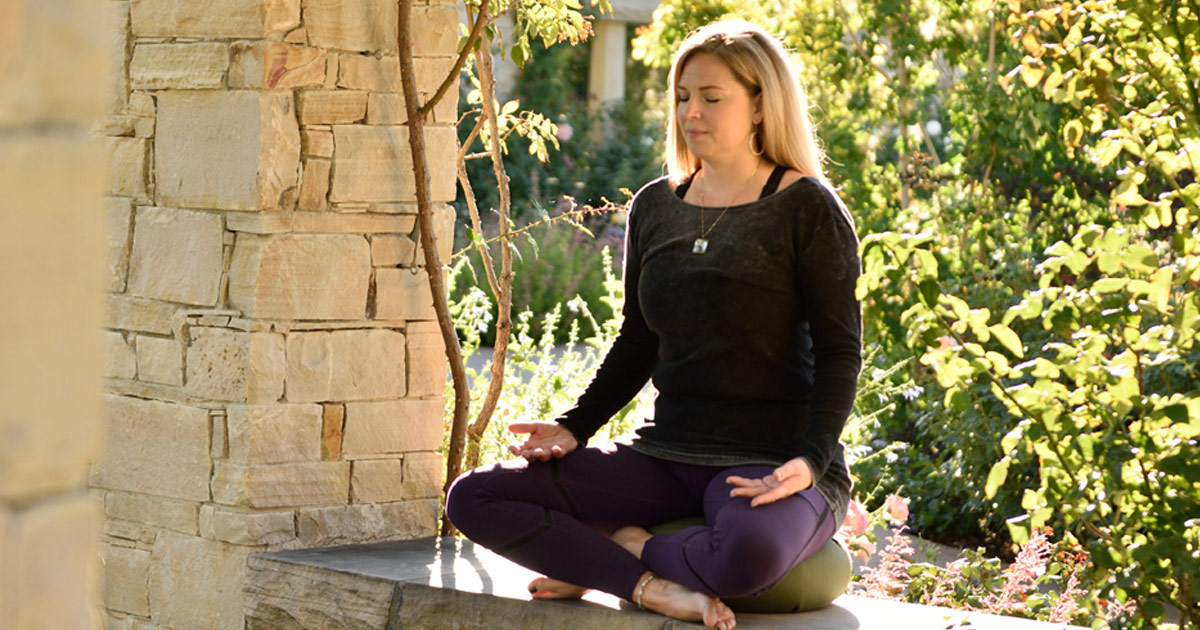
In the Insight meditation tradition, breath awareness is the first technique we practice. Observing our breath creates an anchor for the restless mind. Of course, practicing breath awareness doesn’t guarantee that our minds won’t still spin out. But breath awareness gives us a place to start.
But why the breath? Why not a candle? Or a mantra? Or an intention or affirmation? All these things make excellent anchors in other types of meditation. But in mindfulness practice, the intention is to be aware of the moment-to-moment processes arising and passing in our experience. Watching the breath is a gateway into our present experience.
All living things breathe. Breathing is an ever-changing, moment-to-moment process, just like all the other changing sensations in our experience. The average human takes approximately 23,000 breaths every day. That gives us a whole lot of opportunities to be mindful. Paying attention to breathing gives our minds a place to land.
Mindfulness of breathing is not the same as pranayama, however. In breath awareness practice, we’re not trying to control the breath. We’re simply observing the inhalations and exhalations as they arise on their own.
How to Practice Breath Awareness
If you’ve ever tried to gather your attention on breathing, you already know that it’s not so easy. Our minds don’t initially like to be corralled. They prefer to spin out, reflecting on memories, plans, worries, reveries, etc. Sometimes it seems like a miracle when we can pay attention to a single breath.
And that’s actually the most helpful instruction I’ve encountered: to pay attention to just this inhalation, and then just this exhalation. In this practice, we recommit to be present with each part of the breath. Each time we commit to being mindful of just this inhalation and just this exhalation, we’re building the skill of being present to all the changing sensations in our experience.
Breath Awareness Techniques
There are other helpful breath awareness techniques as well. Here are a few that might help you develop some continuity in your practice:
- Anchor your breath in your body: Sit in a comfortable position, on a meditation cushion or chair. Relax and begin breathing naturally. Notice if there’s a place in your body where your breath feels clear. Common areas for breath awareness are the nostrils, the throat, the chest and the abdomen. Center your awareness in that area as you tune into your breathing. Is it warm or cool, smooth or rough, deep or shallow, long or short? Feel into the sensations of breathing.
- Count your breaths: You can use any number sequence you like—1 to 10, 10 to 1, 20 to 25, etc. I mention these last two methods of counting because if we count in the way our minds are conditioned to count, in sequence from low to high starting with 1, it’s easy for it to become mechanical. Be creative with your counting.
- Make a mental note: Lightly note “inhaling” and “exhaling” while you are breathing.
- Stay connected during the pause: The pause between our exhalation and the next inhalation is a place where it’s easy for our minds to slip away. You can lightly note “pause” or “stillness” during the pause. But also, investigate the pause. Feel what’s happening in your body when there’s no inhalation or exhalation arising. What sensations are present in that place of stillness?
- Look more closely: Be attentive to the beginning, middle and end of each inhalation and each exhalation. This helps you sustain your attention.
Practice Patience
It could be that one of these techniques will resonate with you and you’ll choose to use it every time you practice. But feel free to experiment. If a particular technique isn’t working for you on a particular day, try something else.
It’s helpful to remember that our minds are conditioned to think. That is what they do. So when it seems we can’t be aware of more than a fleeting moment of an inhalation, that’s okay. It’s not helpful to react with anger or self-flagellation when our minds are especially out of control. That only causes the mind to spin out even further.
The good news is that every time you notice your mind has slipped away is a moment of freedom. Every time you notice that you’ve drifted, and every time you bring your mind back to your breath, you strengthen the skill of being mindful. Mindfulness is a practice, not a performance. Over time, the mind does settle. And tending to our very own breath is a great place to start.
